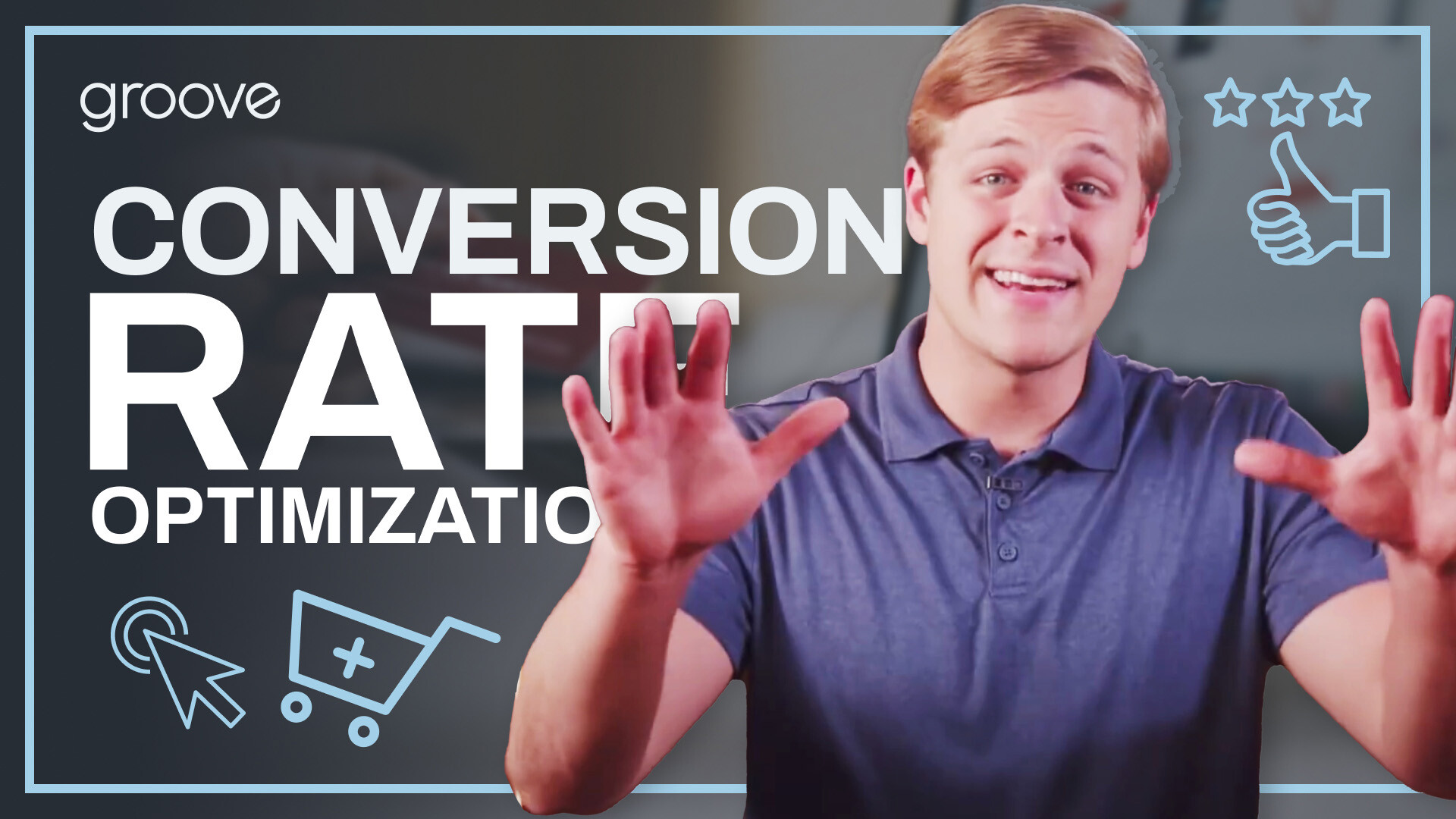With new online merchants popping up every day, you should be looking to maximize the success of your eCommerce website in every way possible. If you are, you've found the experts with over 15 years of experience in helping online merchants design, build, and grow their eCommerce websites.
In today's competitive digital landscape, it's crucial to optimize your website to maximize the number of website visitors that convert into paying customers. A high conversion rate is a key indicator of a successful online store. Let’s explore the best practices we have learned over our time as an agency for Conversion Rate Optimization (CRO) that can grow your online store.
Optimizing Website Speed
In today's fast-paced online world, where users have little patience for slow-loading websites, optimizing your website speed is crucial for a positive user experience and improved conversion rates.
First impressions matter, and one misplaced popup or poorly rendered UI element can quickly scare away a first-time visitor. Therefore, addressing the problem of slow-loading pages becomes paramount.

The Problem: Slow-Loading Pages and High Bounce Rates
Slow-loading pages not only frustrate visitors but also contribute to high bounce rates. When potential customers encounter sluggish load times, they are more likely to abandon your site and seek faster alternatives. This not only results in missed conversion opportunities but also damages your brand reputation. To avoid these negative outcomes, it is essential to identify and address the issues causing your website to load slowly.
How to Fix It: Steps to Optimize Website Speed
Fortunately, there are several steps you can take to ensure your website loads quickly and efficiently. By implementing these best practices, you can enhance user satisfaction, reduce bounce rates, and improve your overall conversion rate.
- Compress Images: Images are often the primary culprits behind slow-loading pages. Compressing images without compromising their quality is crucial. Use image compression tools to reduce file sizes, enabling faster loading times while maintaining visual appeal. Striking the right balance between image quality and size is key.
- Minimize Website Code: Excessive or unnecessary code can significantly impact your website's performance. Review and optimize your website's code by removing any redundant elements, unused plugins, or bloated scripts.
- Leverage Caching Techniques: Caching involves storing static content, such as images, CSS files, and JavaScript files, on the user's browser or a server intermediary. By caching these elements, subsequent page loads become faster, as the browser or server doesn't need to fetch them again. Implement caching techniques, such as browser caching, server-side caching, or content delivery network (CDN) caching, to reduce load times and improve website performance.
Streamlining the Checkout Process: Simplifying the Path to Conversion
A seamless and streamlined checkout process is a crucial component of optimizing conversions in the world of eCommerce. After all the effort spent attracting potential customers to your website and enticing them with your products, the last thing you want is for them to abandon their carts due to a complicated or time-consuming checkout experience.

The Issue: Complex Checkout Experience and Cart Abandonment
Imagine a potential customer who has carefully selected their desired products and is ready to make a purchase. However, upon reaching the checkout page, they are confronted with an overwhelming number of form fields to fill out. This can be a significant turn-off, leading to frustration and ultimately abandonment of the cart. Complex or lengthy checkout processes act as barriers, preventing customers from completing their purchases and negatively impacting your conversion rates.
The Solution: Minimize Steps and Offer Guest Checkout
- Critically evaluate your checkout process and identify areas where you can minimize steps. Only ask for essential information that is necessary to process the order, such as shipping and billing details, and any required payment information.
- Offering a guest checkout option can significantly simplify the process. Many customers prefer not to create an account or go through the hassle of providing personal information beyond what is required to complete the purchase.
- Leverage a single-page checkout tool, such as BigCommerce's One-Page Checkout. This innovative feature condenses the entire checkout process onto a single page, eliminating the need for customers to navigate through multiple pages. On a single page, customers can review their order details, enter shipping and payment information, and complete their purchase seamlessly.
- Consider adding helper text that provides clear instructions and guidance. This can help customers understand each step and reduce confusion or uncertainty.
- Make it easy for customers to go back to previous sections if needed, allowing them to review and make any necessary changes without starting the entire process from scratch.
Enhancing Product Descriptions and Images: Creating Compelling Visual Experiences
When customers cannot physically interact with products before making a purchase, the importance of well-crafted product descriptions and high-quality images cannot be overstated.
These elements serve as the primary means for customers to understand and visualize the products they are considering.

The Challenge: Bridging the Gap of Physical Interaction
Unlike brick-and-mortar stores, eCommerce lacks the ability for customers to physically touch, feel, or examine products. This absence of direct interaction makes it even more critical to compensate for this limitation by providing detailed and accurate information about each product. Customers rely heavily on product descriptions and images to gain a comprehensive understanding of what they are considering purchasing.
The Solution: Crafting Compelling Product Descriptions
It is essential to craft product descriptions that go beyond mere specifications and provide a compelling narrative. Highlight the key features, benefits, dimensions, and any other relevant details that help customers visualize the product in their minds.
- Consider the customer's perspective and anticipate the questions they may have while evaluating the product. Address common concerns or uncertainties proactively within the product description.
- Avoid using generic or clichéd language. Strive to infuse your product descriptions with personality and authenticity that align with your brand's voice and values. Capture the essence of the product and its unique selling points to create a connection with potential customers.
- Invest in professional product photography or use high-resolution images that accurately represent the product's appearance and details. Customers cannot physically examine the products, so images become their primary window into what they are considering purchasing. Consider multiple images that showcase different angles, alternate views, or even swatches and close-up details.
Offering Social Proof: Building Trust and Confidence in Your Brand
Establishing trust and credibility is paramount for driving conversions. One highly effective strategy to achieve this is by leveraging the power of social proof. By showcasing positive feedback and experiences from others, you can significantly influence potential customers' purchasing decisions and instill confidence in your brand.

The Concern: Building Trust in the Digital Realm
When customers cannot physically see or touch a product, they often seek reassurance from others who have already had the experience. They look for social proof as a signal that they can trust your brand and make a confident buying decision. Without tangible evidence of quality or reliability, customers may hesitate or abandon their purchase altogether.
The Remedy: Displaying Customer Reviews, Ratings, and Testimonials
- Prominently display customer reviews, ratings, and testimonials on your product pages. These testimonials provide potential customers with real-life accounts of the positive experiences others have had with your products. Genuine and unbiased feedback from previous buyers acts as a powerful endorsement and helps alleviate any doubts or reservations.
- Encourage customers to leave reviews and ratings after making purchases. Provide clear instructions on how to leave feedback and make the process as simple and convenient as possible. Positive feedback not only serves as valuable social proof but also serves as a valuable source of insights for potential customers.
- Consider integrating social feeds into your website. Social feeds display real-time social media posts related to your products, creating an authentic and engaging community around your brand.
- Consider implementing a loyalty program or referral system that rewards customers for leaving reviews or referring others. Incentivizing customer feedback not only encourages social proof but also fosters a sense of loyalty and engagement with your brand.
Building social proof is an ongoing process that requires engagement and interaction with your customers. Respond to customer reviews, whether positive or negative, in a timely and professional manner. This demonstrates your commitment to customer satisfaction and reinforces trust in your brand.
Optimizing Product Detail Page Layout

The Concern: Poor User Experience
The layout of your product pages plays a crucial role in driving conversions. A well-organized and visually appealing product page can capture the attention of your visitors and encourage them to take the next step towards making a purchase.
Getting Started
- Start by placing vital information prominently. This includes the price, product variants(such as size or color options), and add-to-cart buttons. Make sure these elements are easily visible and accessible to users.
- Include trust badges or seals that signify secure transactions, clear and persuasive product titles, and engaging product descriptions that highlight the unique selling points of your products.
- Take advantage of upsells and cross-sells by suggesting related products that complement the item a customer is viewing or adding to their carts. This can increase the average order value and encourage customers to explore additional offerings from your store.
- Consider incorporating guarantees and assurance badges to alleviate any concerns or doubts customers may have, thereby boosting their confidence in making a purchase.
Simplifying Navigation and Search

The Difficulty
A user-friendly navigation and search experience are essential for guiding customers to the products they're looking for. Without filters, categories, and a prominent search bar users will have a difficult time finding what they came to your online store looking for.
The Fix
- Enable filters that allow customers to refine their product searches based on specific criteria such as price range, brand, or product features. This helps them narrow down their options and find the perfect item quickly.
- Organize your products into logical categories that are easy to navigate. Clear and intuitive navigation menus make it effortless for customers to explore different sections of your website.
- Implement search suggestions as users type. As they enter keywords into the search bar, display relevant suggestions that align with their search query. This can help them discover products they may not have considered initially.
Providing Clear Calls to Action (CTAs)
Why They’re Important
Call to action buttons (CTAs) are crucial for guiding customers through the conversion process. They prompt users to take a specific action, such as adding a product to their cart or proceeding to checkout. Clear and compelling CTAs should be strategically placed throughout your website, especially on product pages and during the checkout process.
Taking Action
- Ensure that your CTAs stand out visually. Use contrasting colors, larger font sizes, or even button styling to make them visually appealing and easily identifiable. The text on the CTAs should be concise, action-oriented, and create a sense of urgency, encouraging customers to act immediately. For example, "Add to Cart," "Buy Now," or "Shop Now" are all effective CTAs.
- To make your CTAs scannable and easily understandable, consider using descriptive icons or symbols in conjunction with the text. This helps users quickly grasp the intended action without having to read the entire CTA.
- Ensure that CTAs are placed strategically on your website, such as above the fold or at the end of persuasive product descriptions.
Personalizing the Shopping Experience

Why It’s Important
Personalization is a powerful tool for increasing conversions and fostering customer loyalty. By utilizing customer data and segmentation, you can tailor the shopping experience to individual preferences and interests.
How To Personalize eCommerce
- Leverage data from previous purchases or browsing history to recommend relevant products to your customers. Implement recommendation engines, such as SearchSpring or Bloomreach, that analyze user behavior and provide personalized product suggestions. This not only increases the relevance of your product offerings but also enhances customer engagement and encourages repeat purchases.
- Consider sending personalized emails with product recommendations based on each customer's preferences. By nurturing your relationship with customers through personalized communication, you can foster loyalty and increase the likelihood of conversions.
Enabling Multiple Payment Options

Letting Customer Pay Their Way
Customers have different preferences when it comes to payment methods. Offering a variety of payment options accommodates these preferences and ensures a convenient and frictionless checkout process.
How To Improve
- In addition to traditional methods like credit cards, consider integrating popular digital wallets such as PayPal or Apple Pay. These payment gateways provide a seamless checkout experience, allowing customers to complete their purchases quickly and securely. By offering a range of payment options, you remove barriers that may hinder conversions and cater to the diverse needs of your customer base.
Offering Discounts and Incentives

Markdown Makeover
Discounts, promotional offers, and loyalty programs are powerful incentives that can motivate customers to make a purchase. Additionally, free shipping is an especially enticing promotion that can significantly increase conversions. Limited-time deals, in particular, create a sense of urgency and encourage immediate action.
Crafting Compelling Coupons
- If offering free shipping is not feasible for your business, consider implementing a minimum cart threshold to qualify for flat-rate or free shipping options.
- Occasional discounts and incentives not only attract new customers but also foster customer loyalty. Consider implementing a loyalty program that rewards repeat purchases or offers exclusive perks to your most valued customers.
By nurturing long-term relationships with your customer base, you increase the likelihood of repeat purchases and positive word-of-mouth recommendations.
Conclusion
Continuous conversion rate optimization (CRO) is a vital aspect of running a successful eCommerce business. By implementing the best practices discussed in this blog post, you can enhance the user experience, build trust and credibility, and increase your conversion rates.
Remember to optimize your website speed, streamline the checkout process, enhance product descriptions and images, offer social proof, optimize product page layout, simplify navigation and search, provide clear calls to action, personalize the shopping experience, enable multiple payment options, and offer discounts and incentives. By focusing on these areas, you'll be well on your way to creating an eCommerce website that converts and drives long-term success.
To further improve your website's conversion rates, understanding the role of design and development is crucial. Discover key strategies in our blog, "Design And Development Essentials To Drive Conversions", which provides insights into creating a user-friendly and conversion-optimized website.
If you’re overwhelmed by all of the areas your website could be improved, feel free to reach out to our team of seasoned eCommerce CRO experts with the experience to create impact driven results for your brand by filling out our contact form here. Interested in our conversion rate optimization services? Learn more about them here.

E-BOOK
20 Best Shopify Apps For Your eCommerce Store
Explore tags:
About the author
Subscribe to the Groove Newsletter
Get the latest updates and insights straight to your inbox




